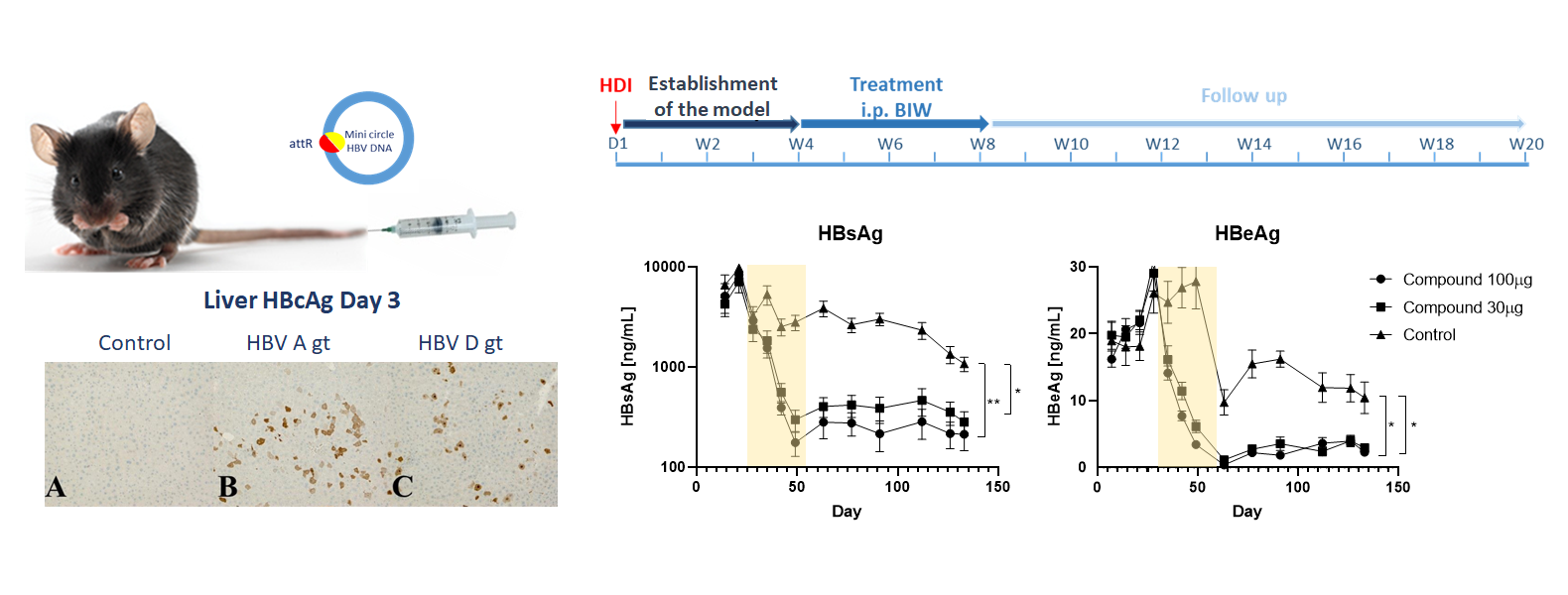Immune competent mouse models of CHB
PI: Gabriel Birkuš, co-PIs: Radim Nencka, Ivan Rosenberg, Jiří Brynda, Lubomír Rulíšek, Evžen Bouřa, Miroslav Hájek

We have successfully established mouse models of chronic hepatitis B (CHB) by hydrodynamic injection of pAAV-HBV gt A plasmid or minicircle plasmids encoding HBV gt A and gt D. HBsAg and HBeAg are detectable in plasma and HBcAg in livers of >90% of the injected animals for up to 7 month. The models were used to test anti-HBV activity of a novel STING agonist, developed during the first phase of the project, anti-mouse PD-1 and anti-mouse CTLA-4 mAbs. The STING agonist induced a dose dependent, statistically significant (p <0.01) decrease in the levels of HBcAg, HBsAg and HBeAg in the treated animals. Moreover, one animal in each treatment group induced expression of anti-HBsAbs. The follow-up study showed that the blockage of mouse INF α/β receptor results in a significant reduction of the STING agonist activity. Even though B and T cells from the treated animals expressed activation markers, ELISPOT assay did not show a difference between the treated and control animals. Anti-mouse PD-1 mAb induced response in three out of nineteen treated animals; however, anti-CTLA-4 mAbs were inactive.
The program is an example of a multidisciplinary collaboration of medicinal chemists, computational chemists, virologists, immunologists, and biochemists, and shares a common goal with our colleagues from Gilead to cure CHB.




